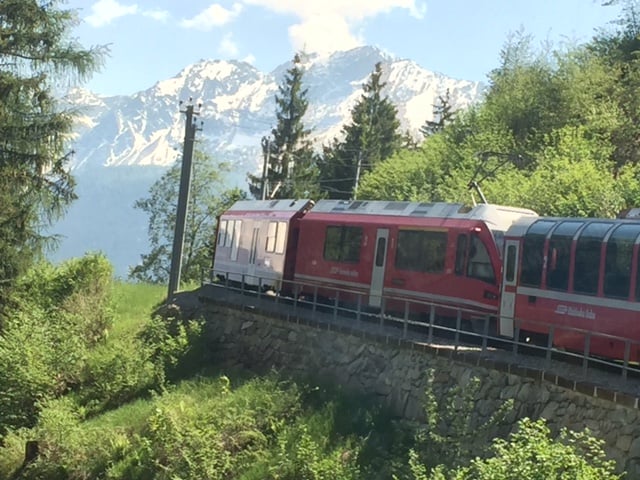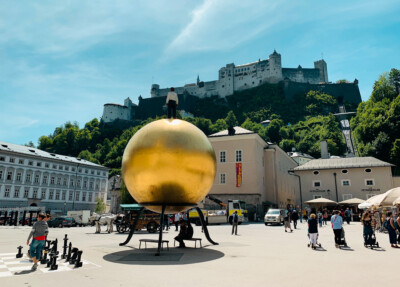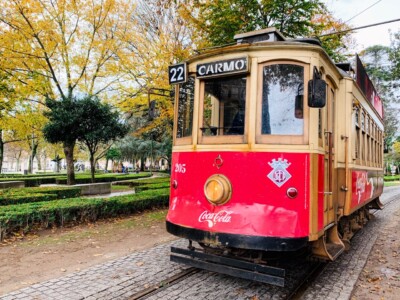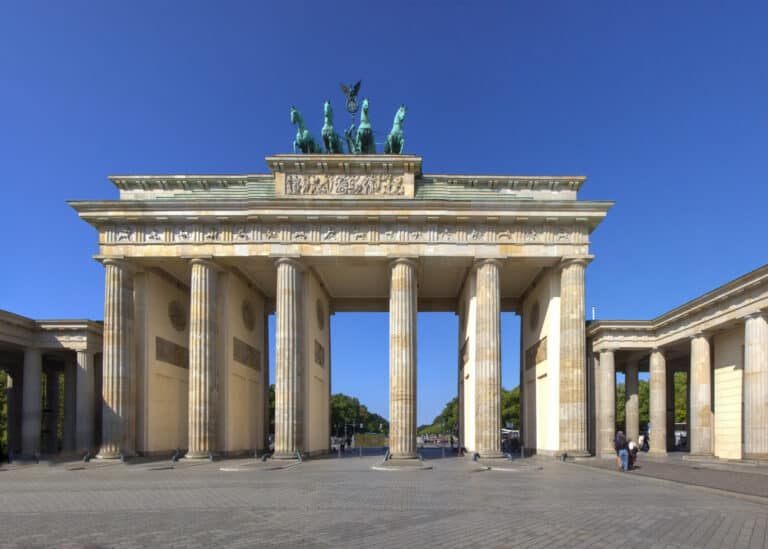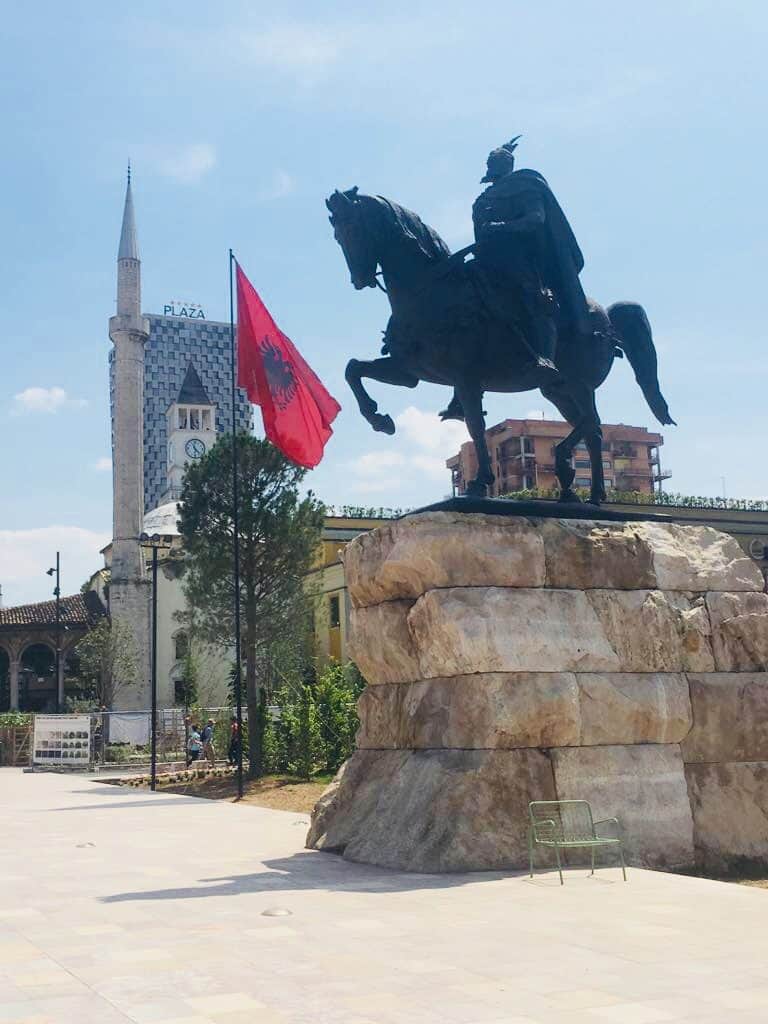2 days in Bologna: an itinerary for your short break

Bologna is one city you should definitely put on your list of Italian destinations.
With its distinctive red roofs, elegant porticoes, and two leaning towers, not to mention an unrivalled foodie experience (which is really saying something in a country renowned for its superb cuisine), Bologna is a city that never fails to impress.
This post gives you an itinerary for 2 days in Bologna that includes the best things to see and do in this wonderful city.
This post contains affiliate links
About Bologna
Bologna is the largest city in the Emilia-Romagna region in northern Italy. It is within easy reach of other major cities: it’s just over 70 miles from Florence and around 95 miles to Venice.
The independent republic of San Marino, the world’s fifth smallest country, is only 80 miles away.
Bologna is often referred to by its three nicknames – La Dotta, La Grassa, and La Rossa.
La Dotta (or ‘the erudite’) reflects the city’s status as a place of learning: Bologna is home to the world’s oldest university, founded in the late 11th century.
As you might have guessed, La Grassa (‘the fat’) owes its origin to Bologna’s fabulously rich food culture.
And La Rossa (‘the red’) reflects not only the terracotta tiled roofs’ colour but apparently also the city’s tendency to lean to the left politically.
Why visit Bologna?
Where to start?
There’s plenty to draw you to the city, and that will justify spending some time here. This often overlooked city, which is steeped in history, showcases a treasure trove of architectural and culinary attractions that can all be fitted into a short break.
The architecture
The first reason to visit Bologna is the unique architecture.
As well as its grand historical buildings, some of which date back to the Middle Ages, Bologna has porticoes – covered walkways that extend from many buildings. These are one of the city’s most distinctive features and are more numerous than anywhere else in the world.
The porticoes have varying designs and provide shelter when it’s raining. They cover a combined distance of nearly 25 miles and became a UNESCO World Heritage site in 2021.

The world’s longest portico – the Portico of San Luca – can be found in the city. This leads you from the city’s gates to the Basilica Santuario della Madonna di San Luca (the sanctuary on the hill that you may have spotted when you arrived into the city).
You can also see one of the few surviving originals at Casa Isolani in Strada Maggiore.
Like Pisa, Bologna has its own leaning tower. In fact, there are two.
And they are among a handful of landmarks, including one of Europe’s largest churches, that should definitely be included in your 2 days in Bologna itinerary.
The food
Another reason to visit is for the food. Anyone with a healthy appetite and a penchant for good quality food will be in for a real treat here.
Italy’s culinary heartland, Bologna is, as you’d expect by the name, where Bolognese sauce comes from. Ragu alla Bolognese, to give it its proper name, is an essential ingredient in Italian cooking, but this is just for starters.
The sheer breadth of high-quality fresh produce is all too evident from the city’s café and restaurant menus. You’ll also see beautifully presented cheeses, meats, and other delicacies on display in its delis and market stalls.
The city’s location
Bologna is also within easy reach of many other places of interest if you want to extend your trip. These include Florence, Modena, Parma, Pisa, Ravenna, Rimini.
Even the tiny independent state of San Marino, should you fancy fitting in another country.
The city’s rail connections make trips to nearby towns and cities incredibly easy.
How to get to Bologna
Bologna is very easy to get to, thanks to its excellent air, rail, and road connections.
The city’s international airport – Bologna Guglielmo Marconi airport – is about four miles to the north west. It is well connected to other European cities, as well as other international destinations further away.
Bologna is an important rail hub on the national rail network. So if you are arriving by train from elsewhere in Italy, you can catch high-speed trains that connect you easily and quickly to many other popular Italian destinations that you could day trip to (such as Florence, which has a fast train which takes just under 40 minutes).
You can also hop on regional trains to visit places like Modena, Parma, and Rimini.
How to get from Bologna airport to the city centre
Once you’ve come out of the arrivals hall at the airport, you can pick up a taxi or take the cheaper option, the bus 944. The bus stops at Bologna Centrale station (the main train station).
There is also the Marconi Express monorail train that runs to the main train station. From here it is a leisurely 10 to 15 minute walk into the heart of the city.
However, if you don’t fancy walking into the centre from the main train station, you can pick up several buses outside that will drop you centrally (TPER operates the local buses).
Once you are in Bologna’s historic centre you should be able to walk pretty much everywhere. If you do, you will undoubtedly see a lot more, and there is plenty to soak in.
Your itinerary for 2 days in Bologna
The two-day itinerary outlined below covers the city’s main sights. As most of these are within walking distance of each other, you should be able to see most of it on foot.
To help with your planning, this map is useful.
2 days in Bologna
Day 1
Morning: Start in the main square, Piazza Maggiore, and visit the Basilica di San Petronio. Then wander around to see the surrounding palazzos. Walk to the two leaning towers and climb the Asinelli Tower. Stop for a coffee in Piazza Santo Stefano, see the Palazzo dell’Archiginnasio, and then take a stroll through the Quadrilatero district.
Afternoon: Having seen what’s on offer in the Quadrilatero district, try out some of the city’s finest food with a food tour. You can book onto an organised tour or do this independently by popping into the numerous cafes and restaurants, delis, and food markets.
Day 2
Morning: Visit the former Jewish Ghetto and learn about its history. Stop by the Basilica of San Giacomo Maggiore in Piazza Rossini and then head to the city’s University district. You could then visit the National Art Gallery or stop off at another of the city’s museums.
Afternoon: Take a trip out of the main centre. You could walk to the Basilica Santuario della Madonna di San Luca via the world’s longest portico, or take the train to nearby places such as Ravenna, Modena or the Ferrari museums in Modena and Maranello.
Day 1: morning
Piazza Maggiore
The best place to start on your first day is the main square – Piazza Maggiore – a hive of activity and a stone’s throw from a number of top attractions.
I’ve covered these below.
Note that although it looks like there are a lot of these to cram in in just a morning, for some, the suggestion is to just wander around the area or place. You don’t necessarily need to go into the buildings or museums if you are short on time.

The Basilica di San Petronio
The Basilica di San Petronio is hard to miss as you stand in the square: it’s the largest church in the city.
You can marvel at its fabulous façade, which includes an eye-catching pink marble in the bottom half. Designed in the gothic style, construction of the basilica started in the late 14th century, and it is named after the city’s patron saint.

The Basilica is Bologna’s most important church.
One of the main highlights inside is what is considered to be the world’s longest sundial, spanning over 200 feet. However, visitors also come to see the Musical Chapel of San Petronio and the Chapel of the Three Wise Men.
The Palazzo dei Notai
Standing between the Basilica di San Petronio and the Palazzo d’Accursio is the Palazzo dei Notai. It was home to the Guildhall for Notaries (members of the legal profession).
Unfortunately, it’s not possible to go inside the Palazzo. But it is still worth admiring the building’s architecture from outside in the square.
The Palazzo dei Banchi
Stretching across the entire eastern side of the square is the Palazzo dei Banchi. Dating from the 16th century, this striking palace built in the Renaissance style is notable for its green dome and long portico at it base.

Two main archways in the building lead you through to a warren of streets behind. These are filled with delis, restaurants, and shops that are worth browsing.
This is the start of the old market in the Quadrilatero district (see below).
The Palazzo D’Accursio
Standing directly on the opposite side of the main square, is another historic building, the Palazzo D’Accursio (also known as Palazzo Comunale).
This is named after a law professor and has been the seat of Bologna’s local government (town hall) for several centuries. It was also here that Charles V was crowned King of Italy.
This historically important landmark comprises several different sections.
One of the most distinctive of these is the clock tower you can see to the left as you are standing facing the building in the square. Other highlights include the bronze statue of Pope Gregory XIII and the Virgin and the Child statue.
The building houses the city’s Collezioni Comunali d’Arte (the Municipal Art Collections). This showcases a wide range of paintings and sculptures spanning different historical periods.
The Palazzo del Podestà and Palazzo Re Enzo
Facing the Basilica of San Petronio, the Palazzo del Podestà, with the distinctive bell tower next to it (the Torre dell’Arengo) is definitely worth exploring for its impressive portico facing the square and the vault underneath.

You can have some fun in the cavernous whispering gallery (Voltone del Podestà) here, which is known for its fantastic acoustics. We went when we visited, in the expectation that the stories we’d read of the whispers were just myths.
We tried it out. One of you stands diagonally across from the other in one of the vault’s four corners and listens against the wall while the other speaks from the opposite side.
The stories we’d read were right – you could hear their voice really clearly. It’s quite amazing as you can still hear the person’s voice over the crowds of people milling around you.
Like its neighbour, the Palazzo Re Enzo dates from the 13th century. It was built to extend the Palazzo del Podestà, although it faces Piazza del Nettuno.
The palace is named after a famous prisoner, Enzo of Sardinia, who was held there for nearly 25 years.
The Piazza del Nettuno with the Fountain of Neptune
Located right in front of the main square is the Piazza Nettuno, named after the 16th-century bronze statue of Neptune, who stands atop a plinth surrounded by a fountain.

You don’t need to spend long here, but you should definitely see the monumental sculpture.
Once you’ve explored the main square and admired the surrounding buildings, there is a lot to see immediately to the east, a short walk away. From here, I’d recommend you head to see the city’s two towers.
The two towers: Asinelli and Garisenda
It’s hard to ignore Bologna’s Two Towers (Le Due Torri) on the city’s skyline. Both were built overlooking Piazza di Porta Ravegnana during the 12th century.

The numerous towers in the city have come to symbolise Bologna. It is said that there could have been up to 100 during medieval times, although fewer remain nowadays.
The Asinelli Tower
The Asinelli is the taller of the two towers. From a distance, it appears to be leaning so much that you could be forgiven for thinking it’s about to topple over.
The tower is almost 230 feet tall and is the only one of the two that you can go into. However, you need to book before visiting, as we discovered when we tried to climb the tower at the last minute.
You can also book tickets for the Asinelli Tower here (this ticket also includes a food tasting).
Judging by the photos of the internal staircase, which numbers just shy of 500 steps, you will need to have a good head for heights if you want to reach the top. But you will be awarded incredible city views once you get there, and it’s the perfect place if you want to see the city from on high.
If you have a Bologna Welcome Card PLUS, you can enter for free.
The Garisenda Tower
Incredibly, the Garisenda Tower leans even more than its neighbour. It had to be shortened in height during the 14th century because locals were concerned it might collapse onto the surrounding buildings.
You can still get up close enough though to take some photos of its incredible tilt.
The Palazzo della Mercanzia
Near to the towers is the Palazzo della Mercanzia so I’d suggest going here next.
This notable building houses the city’s Chamber of Commerce, Industry, Agriculture and Crafts. Its role in this area dates as far back as the 14th century when it was the exchange and customs house for merchants.
As you look outside and admire its gothic façade, you’ll notice a small white balcony set against the red brickwork.
The Palazzo Pepoli Campogrande
A short walk from the Palazzo della Mercanzia is the 17th century Pallazzo Pepoli Campogrande (also known as the Palazzo Pepoli Nuovo). Located on Via Castiglione, this contains Bologna’s Zambeccari Picture Gallery.
The picture gallery takes up the rooms on the main floor. The huge collection on display here includes paintings by Carracci, Crespi, and Creti, among others.
The Museo della Storia di Bologna
If you want to learn more about Bologna’s past, the Museum of the History of Bologna (Museo della Storia di Bologna) is also located on Via Castiglione.
The museum is full of fascinating information and displays outlining the history of the city and its residents throughout the centuries.
The Piazza Santa Stefano
After you leave the museum, head to the attractive Piazza Santo Stefano. This is an open, triangular-shaped pedestrian space that is also known as the seven churches square in recognition of the number of churches that once stood at the far end.

There are some fabulous bars and eateries around here. At certain times, the space is used by local traders to sell antiques and high-quality food.
However, the main attraction here is a stroll around the churches and religious sites that remain. These can be entered via the Chiesa dei Crocefisso. There is also a museum here.
The Palazzo dell’Archiginnasio
From the Piazza Santa Stefano, you can then go to the Palazzo dell’ Archiginnasio of Bologna. This is located on Piazza Galvani, south of the main square.
Built in the mid-1500s, this beautiful building was badly damaged by Allied bombing in the latter stages of World War 2 and needed some reconstruction. You wouldn’t know it from walking around its striking courtyard and porticoes.

The palace has housed the public library (Biblioteca Comunale) since the late 1830s and was the location for the university for more than two centuries before it moved.
If you fancy snooping inside, you can pay a small fee to enter.
The ticket covers admission to the Stabat Mater Hall, one of the two former lecture rooms that university students once used, as well as the absolutely stunning Anatomical Theatre. This dates from the 17th century. Seeing this is worth the price of admission alone if you want to learn more about how trainee surgeons studied anatomy.
The Quadrilatero
On your way back to the main square, end your morning by exploring the old market area in the Quadrilatero district.
This is a great spot to grab something to drink and to people-watch.
It’s also pedestrianised (like much of the central area). So you can take your time ambling along the narrow streets peering in deli windows and admiring the large parma hams dangling from the ceiling and cheeses stacked on top of each other in shop windows. Via Drapperie is particularly good for this.

Day 1: afternoon
Try the food!
You can’t come to Bologna and not try out the delicious, fresh produce sourced locally and from the wider Emilia-Romagna region. Once you’ve built up a hearty appetite in the morning and got a taste for this with a wander through the Quadrilatero area, you could spend the afternoon immersing yourself in Bologna’s vibrant culinary scene.
You can do this independently or as part of a food tour.
Local dishes and food
Unless you are a vegetarian, you must try tagliatelle al ragu when you visit Bologna – and the city has some of the best restaurants to try this in. My partner was so impressed that he ordered it multiple times in different restaurants!
Each one tasted slightly different, and he never seemed to come away disappointed.
In the UK, US, and elsewhere, the nearest comparison is Spaghetti Bolognese.
However, this is actually an inferior interpretation of the real deal which uses the much tastier ribbon pasta and Ragu alla Bolognese. This is a delicious mix of minced beef, veal or pork, onions, carrots, tomatoes, and wine, among other ingredients, to create a far superior and much tastier topping.
Sourced from the wider region, you will also find parmesan cheese (Parmigiana Reggiano), parma ham, and Balsamico di Modena (the traditional balsamic vinegar). Bologna and the wider region also produce an eye-watering range of fantastic cured meats, cheeses, and handmade pastas.
Last, but not least, there’s the obligatory Italian ice cream (gelato). The city has a wealth of gelaterias and no shortage of flavours to sample.
There is even a Gelato Museum you can visit in Anzola dell’Emilia, around 30 minutes outside Bologna.
Food tours
There are a number of food tours you can book where a local guide will take you to the main parts of the city and give you samples of the local food. This is a great way to try out some of the local delicacies without having to buy a big meal.
This two hour walking tour takes you to the main sights, to food stalls in the markets, and then to three establishments where you can sample some local dishes and drink a glass of local wine.
You can also browse other foodie experiences here.
If you want to undertake your food tour independently, several places are worth exploring. The university district (head to this via Via Zamboni) is packed full of great eateries, including cafes and takeaways, as well as restaurants and trattorias.
Alternatively, there is Quadrilatero, just off the main square. This has fantastic places where you can sit down and sample local produce over a glass of wine. This is one of the best places in the city to buy deli platters with a selection of cold meats, cheese, and bread.
If you’re unsure whether you’ll like a particular meat or cheese, trying small samples from a deli might be a better way of giving it a go.
You can also wander through a couple of great food markets showcasing an incredible selection of mouth-watering fresh produce.
There is the covered Mercato delle Erbe with its food court. There’s also the Mercato di Mezzo, a colourful food hall where you can pick what you want and tuck into your meal at communal tables.
As mentioned above, it is very easy to get to places of interest in the region by train.
So if you fancy it, why not spend the afternoon on day 2 in Parma where you can eat the locally produced parmesan cheese and nibble at pieces of prosciutto?
Day 2: morning
To start the next day of your 2 days in Bologna, I’d suggest walking to some of the other parts of the city centre.
The former Jewish Ghetto
Start your second day by exploring the former Jewish Ghetto. This is only a short walk from the main square to the north east, just off Via Zamboni. Via dell’Inferno is the main street where you will find the building that once housed the ghetto’s synagogue.
The Jewish community, whose connections with the city go back a long way, was forced into the ghetto on the orders of Pope Paul IV in 1555. This was surrounded by walls so the Jews could not easily mix with the local population.
The community was then expelled permanently in the 1590s and only returned when the French took over the city two centuries later.
Thanks to the pedestrianised layout of its narrow alleys and streets, the district has retained some of its medieval charm. It is worth exploring to get a feel of a bygone age.
The Jewish Museum of Bologna (Museo Ebraico) is highly recommended and worth visiting. This contains artefacts, documents, and multi-media exhibits that tell you more about the city’s rich Jewish heritage.
If you want to know more about this area, then this walking tour will take you around the area and give you more information on its history.
The Basilica of San Giacomo Maggiore
Not far from the Jewish Quarter, you will find the Basilica of San Giacomo Maggiore, located in Piazza Rossini (named after the famous Italian composer).

The inside of the church is stunning and represents a mix of different architectural styles. The outside porticoes dating from the Renaissance period are also particularly noteworthy.
Bologna’s University District
Walk further along Via Zamboni, and you will come to Bologna’s University District, the main part of which is in the Palazzo Poggi.
The list of famous university alumni, which includes Nicolaus Copernicus, Umberto Eco, Albrecht Durer and several Popes, is impressive.
And even today, Bologna, as the world’s oldest university, remains Italy’s most celebrated academic institution for students to attend (much like Oxbridge is in England and the Ivy League universities in the US).
The area is very diverse and caters to many different interests. Scattered around the bookshops and cafes filled with university students, you will also find churches, museums, and palaces, some of which are significant places of interest.
Inside the Palazzo Poggi is the Musei di Palazzo Poggi. Here there is a fascinating collection of scientific exhibitions belonging to the Institute of Sciences that is laid out across individual themed rooms.
There are sections that house everything from naval models to anatomical wax plates, surgical instruments, astronomical observations and natural history materials.
The Pinacoteca Nazionale di Bologna
Another really important museum – the Pinacoteca Nazionale di Bologna (The National Art Gallery) – is located a short walk away on Via delle Belle Arti.
This fabulous gallery includes collections drawn from many celebrated Italian artists such as Raphael, Reni, Tintoretto, and Titian, to name just a few.
The ‘Canal Window’
Bologna is nowhere near the coast so you may be surprised to discover that it once had a fairly extensive canal network that serviced the silk industry. Much of this now runs under the city’s buildings, roads, and other public spaces.
However, if you wander up to Via Piella (slightly south of Piazza VIII Agosto) and look through the ‘Canal Window’ – a small window in a wall on the bridge – you can see the Canale delle Moline slowly flowing beneath you.
And while you’re in this area, If you fancy a drinking experience like no other, go to Le Stanze on Via del Borgo di San Pietro 1.
This is a beautifully decorated bar housed in a private chapel. You can sit and have a glass of local wine or even a cocktail while looking around at the fantastic frescoes.
Day 2: afternoon
In the afternoon, you could see something outside the main city centre or beyond Bologna altogether.
Here are a few suggestions of things you can do. Take your pick.
The Basilica Santuario della Madonna di San Luca
As you arrive in Bologna, your curiosity may be piqued by the sight of a large domed church on top of a hill (the Sanctuary of the Madonna di San Luca).
This 18th-century religious sanctuary, just over two miles from the city’s walls, is definitely worth making the small diversion to if you have time.

You can walk around the sanctuary and go onto the raised outside terrace (this sits at a height of over 130 feet) that offers wonderful views of the surrounding area.
There are a few different ways to get to the Basilica of San Luca. You can take the San Luca Express (a small tourist train) from the main square or hop on bus 20.
This trip combines a trip on the San Luca train with two food tasting vouchers.
However, a more scenic route (and probably the best way if you have the time and energy during your 2 days in Bologna) is to walk there from the city centre.
The entire route from the city gates to the Sanctuary of San Luca is covered by the longest portico in the world.
Starting at Piazza di Porta Saragozza, you will walk under an incredible 666 arches as you step slowly towards this magnificent church.
Take the train to Parma for another food experience
If you fancy travelling further into the Emilia-Romagna region to visit other Italian cities and towns, you are really spoilt for choice. One option is to go to Parma.
Regional trains to Parma from Bologna typically take around an hour or slightly over.
There is a lot to see here, not least the striking Lombard Romanesque cathedral, which features the beautiful Assumption of the Virgin fresco inside, covering the central dome. Equally stunning is the Baptistery next to the cathedral.
Aside from doing some sightseeing, Parma is also an excellent place to come for another incredible food experience.
Parma is where prosciutto di Parma (Parma ham) and Parmigiano Reggiano (Parmesan cheese) originate from, and there is no shortage of trattorias and other eateries where you can sample various antipasto plates.
If you fancy a food tour while in Parma, this tour might interest you.
Take a spin around the Ferrari museums
If you are a fan of Ferraris, Bologna is a great place to visit, as you have not one, but two superb museums that you can visit.
The first – the Museo Enzo Ferrari – is near Modena’s train station, around 35 miles from Bologna. The museum celebrates the life of Signor Enzo Ferrari, who developed one of the world’s most famous lines in sought-after sports cars.
As well as discovering more about his fascinating life and the history of the company, you can also see Ferraris and Maseratis on display.
The second Ferrari Museum (the Museo Ferrari in Maranello) is closer to Bologna, but smaller. It focuses more on current Ferrari models and on Formula 1.
You can buy an advance ticket to both museums here. You can also purchase bus transfers to the museum here.
Visit Ravenna for the mosaics
There are frequent trains from Bologna to Ravenna, although the journey takes longer than trains running to Parma. The train ride is typically between one and one and a half hours.
You can also book a tour from Bologna to Ravenna.
In some places, Ravenna bears some similarities to Venice in that it is built on a series of islands in a lagoon.
It is also renowned for its 5th to 6th century mosaics. You’ll be amazed by the sheer beauty of these intricate and finely crafted floor and wall decorations found in some of the town’s eight UNESCO World Heritage Sites.
You can purchase a tour ticket to enter five sites, including the Basilica of San Vitale and the Mausoleum of Galla Placidia, here.
Go to the world’s fifth smallest country
San Marino is a small independent and landlocked Republic situated in northern Italy, around 8 miles from the coastal town of Rimini on the Adriatic coast. It is the world’s 5th smallest country, covering just 24 square miles.
It’s an easy day trip from Bologna, or you could combine a visit to both on a short trip (as we did).
The main part to visit is the City of San Marino (or Citta). This is a medieval mountain top citadel that is a designated a UNESCO World Heritage site.
Things to see and do here include a visit to the three towers, Guaita, Cesta, and Montale.
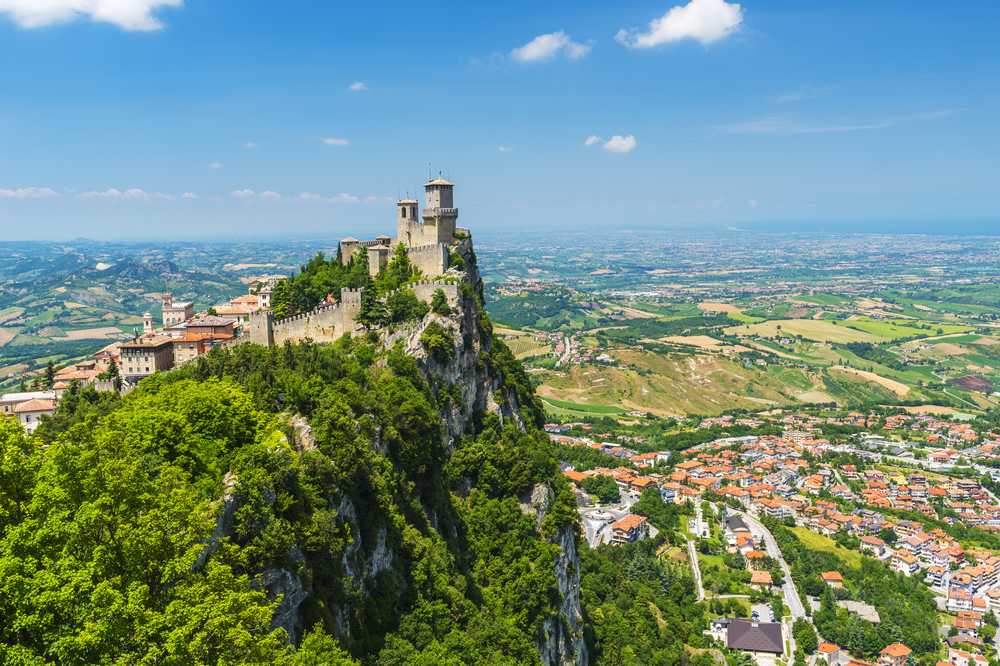
There is also the beautiful Piazza della Liberta, with the city’s Public Palace. This is a lovely place where you can sit outside in a café soaking up the atmosphere and taking in your surroundings.
You can also wander around the old town and fortress walls, visit other museums (there are some quirky ones here, including the Museum of Medieval Criminology and Torture), and catch a cable car down to the lower village of Borgo Maggiore. The ride only takes about two minutes and offers excellent views out to the coastline.
2 days in Bologna
If this is your first time in Bologna, I hope you enjoy it as much as we did.
You might also be interested in other Italian cities I have written about.
These include Venice, one of the world’s most romantic cities, Verona, famous for Shakespeare’s Romeo and Juliet, and the gorgeous Varenna in the Italian Lakes.
For other ideas for short European breaks, click here.


